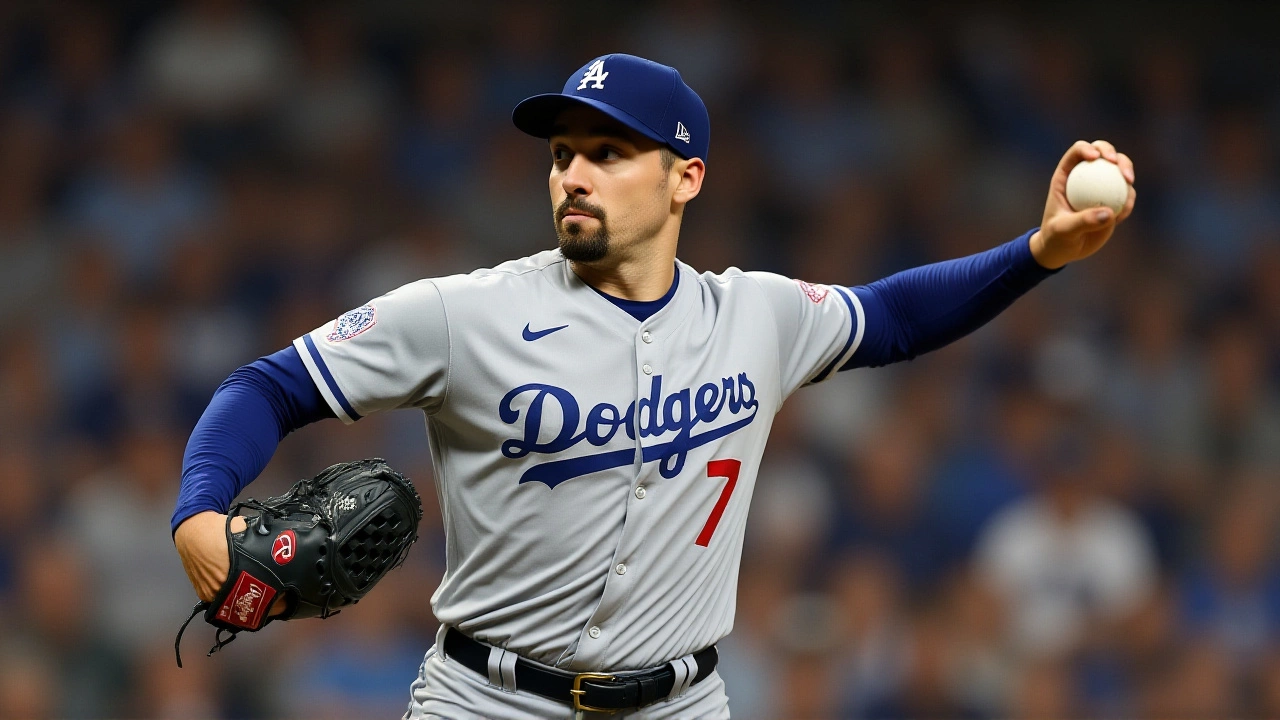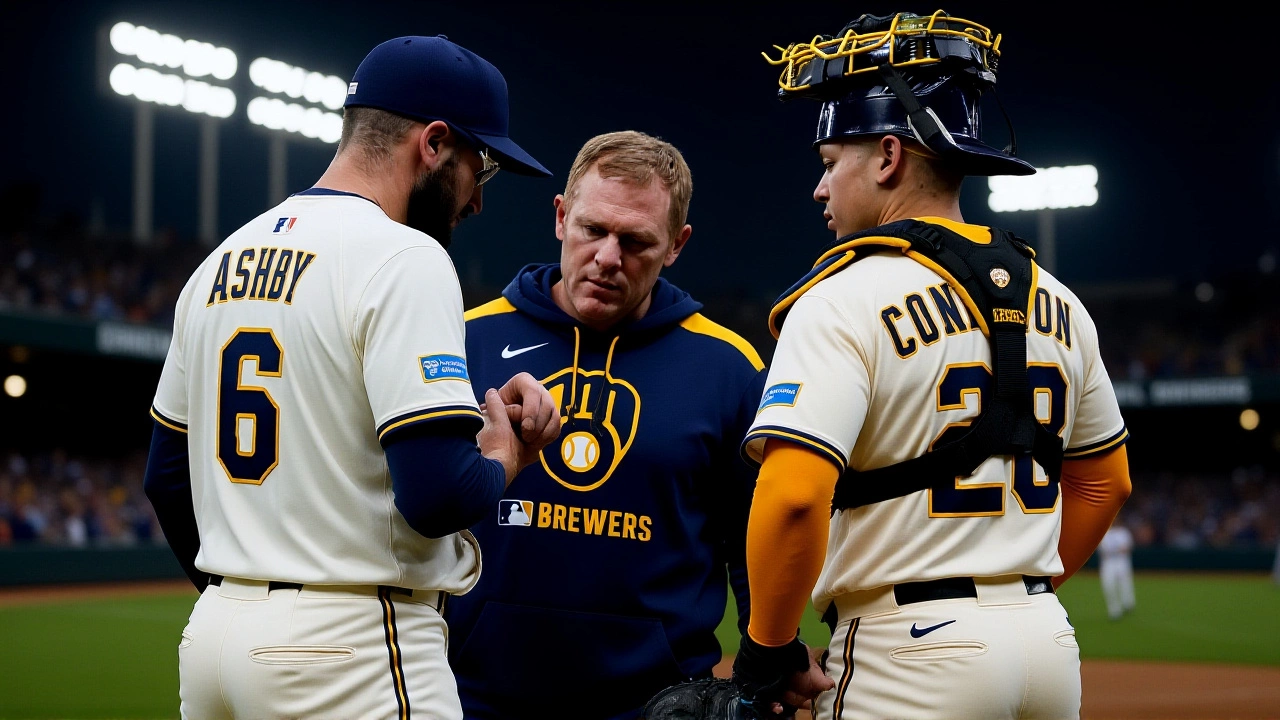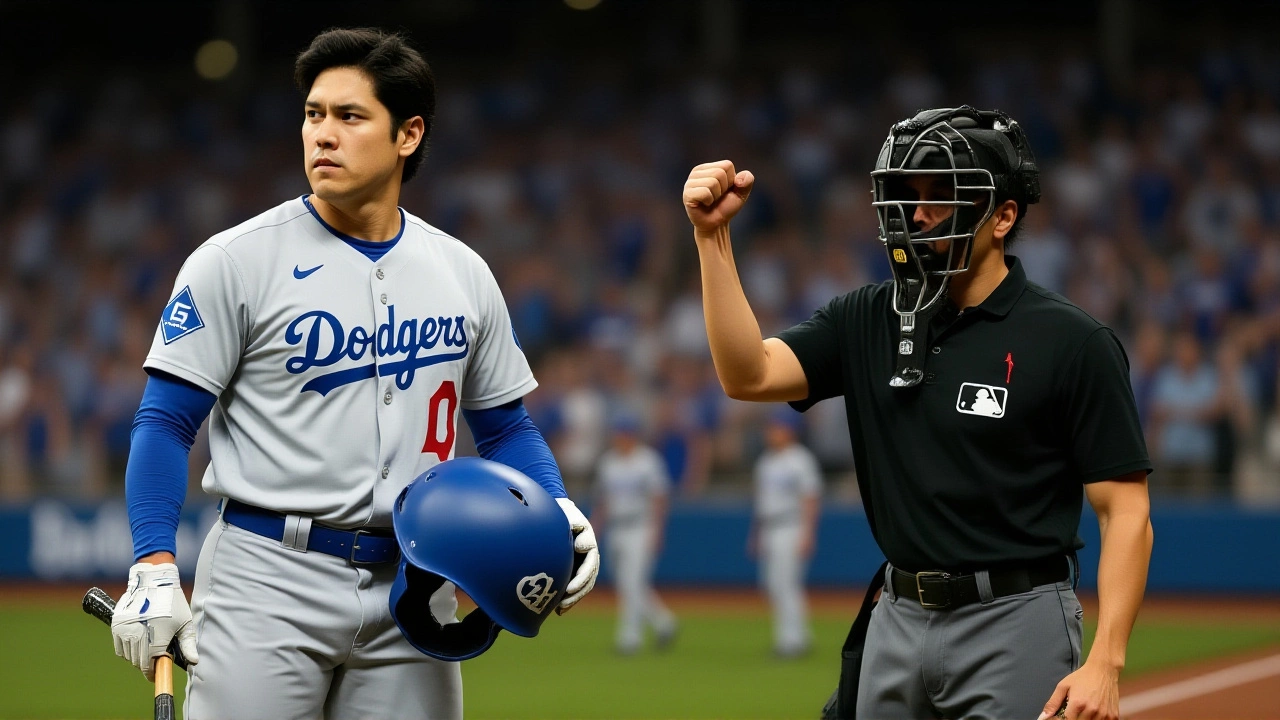When Shohei Ohtani, the Japanese two‑way phenom for the Los Angeles Dodgers stepped up to the microphone at National League Championship SeriesDodger Stadium on October 15, 2025, he finally put a name to the frustration that had been humming in the clubhouse.
Background: A Pitcher‑Hitter in Uncharted Waters
The 2025 NLCS pitted the Dodgers against the New York Mets, a series that promised fireworks after a grueling National League Division Series. Ohtani entered the postseason riding a wave of expectations that he could dominate both on the mound and at the plate, a dual‑role rarely seen since the days of Babe Ruth. Yet the NLDS against the San Diego Padres left a sour taste: just two hits in 16 at‑bats, a .125 average, and seven strikeouts. Those numbers still echo in the dugout.
It isn’t just the stats that matter; the mental grind is palpable. Ohtani told reporters he’s "trying to have quality at‑bats," a phrase that sounds simple but masks the tension of a player who’s used to being a game‑changer. The postseason slump has become a headline, but the reasons remain murky.
Dave Roberts Addresses the Elephant in the Room
Just before Game 3, Dave Roberts, the Dodgers’ manager, leaned into the media scrum at Dodger Stadium. "Shohei is frustrated, and I think that's expected," he said, a tone that mixed empathy with a coach’s pragmatism. "I don’t mind it. We’ll keep working on it." Roberts, born in Naha, Okinawa, and a former MLB infielder, has navigated this kind of pressure before, guiding the Giants to a World Series in 2010.
Roberts didn’t stop at a vague reassurance. He broke down the team's offensive plan for the upcoming games, noting that the Dodgers were deliberately structuring lineups to give Ohtani easier pitches, especially from left‑handed arms. "We’ve got to convert outs when given the opportunity, and then you know, take good at‑bats," he added, his eyes flicking toward the bullpen.
Injury Management: Turning Setbacks into Opportunities
The Dodgers’ roster entered October with a laundry list of injuries. Starting pitchers Blake Snell, Tyler Glasnow, Clayton Kershaw, and Roki Sasaki all spent time on the injured list during the regular season. Only Yoshinobu Yamamoto avoided a major setback.
Roberts explained that the organization’s medical staff executed a "sound, not rushed" rehabilitation timeline, allowing the pitchers to arrive at the postseason fresh enough to throw deep into games. This approach, he said, opened doors for younger arms like River Ryan to gain essential experience.
In a YouTube interview on the same day, Roberts highlighted the silver lining: "Opportunities for guys like Sheen Robleski and the younger guys to develop. It’s a marathon, not a sprint, and we’re seeing those guys step up when we need them."

Impact on the NLCS: A Triple That Shifted Momentum
Game 3 delivered a glimmer of hope. Ohtani led off with a triple that raced home, putting the Dodgers ahead early against the Mets. The moment sparked a brief surge, reminding fans why the two‑way star is worth the hype.
“Facing left‑handers helped me find my rhythm,” Ohtani said in the post‑game press conference, a subtle nod to the tactical adjustments Roberts mentioned earlier. While the Dodgers still trail the series 2‑1, that triple narrowed the gap and proved that the slumps can be broken.
Meanwhile, the Mets, anchored by shortstop J.D. Martinez’s clutch hits, have kept the series tight. The next matchup on October 16 will be a true test of whether the Dodgers can sustain the momentum or if Ohtani’s struggles will resurface.
Broader Implications: What This Means for Two‑Way Players
Ohtani’s October saga highlights a larger conversation in baseball about the viability of two‑way players in the modern era. Managers like Roberts are forced to balance workload, mental fatigue, and strategic matchups—factors that could shape how teams approach similar talent in the future.
Experts, such as baseball analyst Jeff Passan, argue that "the pressure on a player who pitches every five games and also bats every three is unprecedented. Teams need to develop deeper benches and smarter rotations." The Dodgers’ injury‑driven depth may serve as a case study for other clubs.

What Comes Next?
Looking ahead, the Dodgers must capitalize on quality at‑bats and solid pitching. Roberts summed it up succinctly: "If we do that, I like our chances." The team’s next move will likely involve a mix of veteran poise and youthful vigor, a formula that has carried Los Angeles through numerous postseason battles.
For Ohtani, the focus remains on breaking the slump and regaining the confidence that made him a 2021 AL MVP. As the series edges toward its decisive games, every at‑bat, every pitch could reverberate far beyond October 2025.
Key Facts
- Date of press conference: October 15, 2025
- Event: National League Championship Series at Dodger Stadium
- Ohtani’s NLDS stats: .125 BA, 7 K's in 16 ABs
- Dodgers lead series 2‑1 heading into Game 4
- Injured starters this season: Blake Snell, Tyler Glasnow, Clayton Kershaw, Roki Sasaki
Frequently Asked Questions
How does Shohei Ohtani’s slump affect the Dodgers’ chances in the NLCS?
Ohtani’s reduced production (only two hits in the NLDS) limits the Dodgers’ offensive firepower, forcing them to rely on other hitters like Mookie Betts. While his triple in Game 3 sparked a rally, consistent quality at‑bats from Ohtani could be the difference between a 3‑2 series win or a loss.
What injuries have impacted the Dodgers’ pitching staff this season?
Left‑handers Blake Snell and Clayton Kershaw, right‑hander Tyler Glasnow, and Japanese pitcher Roki Sasaki all spent time on the injured list. Their absences prompted the club to fast‑track younger arms such as River Ryan and Sheen Robleski, creating a deeper, albeit less experienced, rotation for the postseason.
Why did manager Dave Roberts emphasize “quality at‑bats” in his comments?
Roberts knows the Dodgers can’t afford many wasted plate appearances against a strong Mets pitching staff. By focusing on disciplined swings and the right approach, he hopes to maximize run production while minimizing strikeouts, a crucial factor in a tightly contested series.
What does Ohtani’s performance say about the future of two‑way players?
His October struggles underscore the physical and mental toll of juggling pitching and hitting at the highest level. Analysts suggest teams may need larger rosters and smarter usage patterns if they want to nurture more two‑way talent without compromising either skill set.
When is Game 4 of the NLCS scheduled, and what does the Dodgers need to do to win?
Game 4 is set for October 16, 2025, at Dodger Stadium. The Dodgers must combine strong starting pitching, timely hitting from the core lineup, and strategic use of their depth pitchers to keep the Mets off balance. Executing on both sides of the ball will be essential to close out the series.
